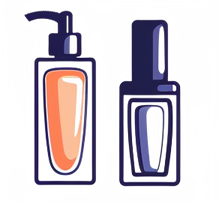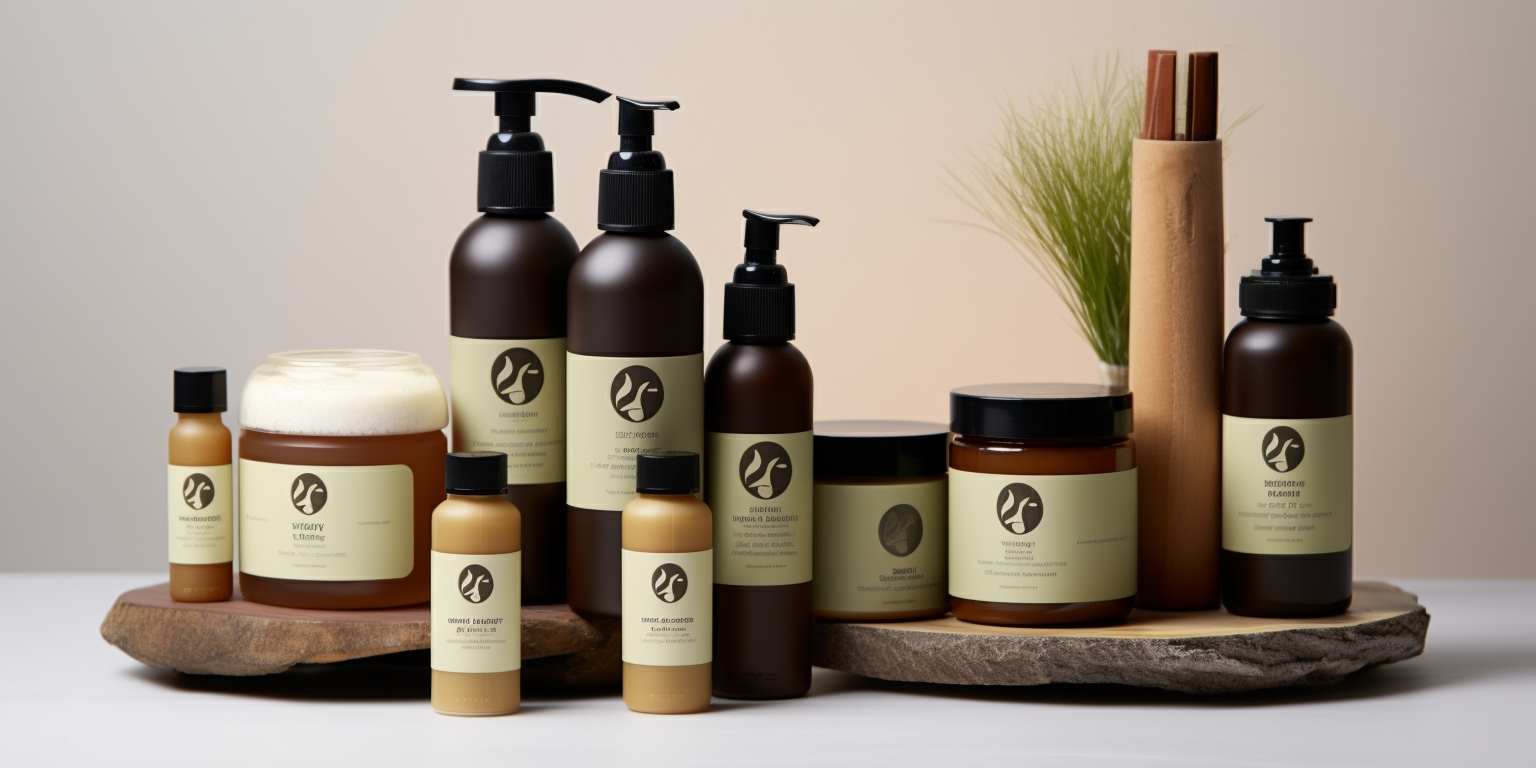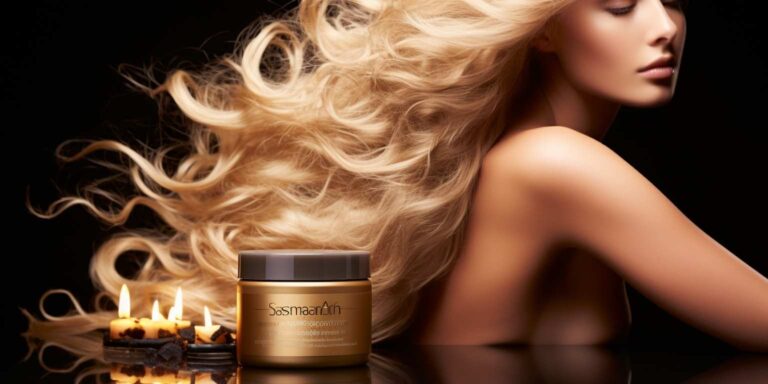The ultimate guide to hair shampoo bars
One of the key advantages of hair shampoo bars is their environmental friendliness. Unlike traditional shampoos that often come in plastic bottles, shampoo bars typically come in minimal or even plastic-free packaging, reducing the amount of plastic waste generated. Additionally, the production of shampoo bars generally requires less water and energy compared to liquid shampoos, making them a more sustainable choice.
Ingredients are another crucial aspect to consider when choosing a shampoo bar. Look for bars that contain all-natural ingredients such as coconut oil, shea butter, and essential oils. These ingredients not only cleanse the hair but also provide moisture and nourishment, leaving your hair feeling soft, smooth, and healthy. Avoid bars that contain sulfates, parabens, and synthetic fragrances, as these can strip the hair of its natural oils and cause damage in the long run.
When using a hair shampoo bar, it’s important to properly lather and rinse to ensure effective cleansing. Wet your hair thoroughly, then rub the shampoo bar between your hands or directly onto your scalp to create a rich lather. Massage the lather into your scalp and hair, focusing on areas where oil and dirt tend to accumulate. Rinse thoroughly with water until all traces of shampoo are removed.
Transitioning to a shampoo bar may require an adjustment period for your hair to adapt to the new cleansing method. During this transition phase, you may notice your hair feeling greasier or waxy than usual. This is normal as your scalp adjusts to the absence of harsh chemicals found in traditional shampoos. Be patient and continue using the shampoo bar consistently, and your hair will eventually reach a balanced state.
Storage is also essential to prolong the life of your shampoo bar. Store it in a well-drained soap dish or shampoo bar holder to allow it to dry between uses and prevent it from becoming soggy. Keeping it dry between uses will not only extend its lifespan but also ensure a better lathering experience each time you use it.
Benefits of switching to shampoo bars
Switching to shampoo bars is a transformative step towards a more sustainable and eco-friendly hair care routine. These compact, solid bars have gained immense popularity for several compelling reasons, making them an attractive alternative to traditional liquid shampoos.
One of the key benefits of shampoo bars lies in their environmental impact. Traditional shampoo bottles contribute significantly to plastic waste, clogging landfills and posing a threat to marine life. Shampoo bars, however, come with minimal or no packaging, reducing plastic consumption and promoting a cleaner planet.
Not only are shampoo bars environmentally friendly, but they also offer a host of advantages for your hair health. These bars are crafted with natural ingredients, eliminating the need for harmful chemicals often found in liquid shampoos. Organic formulations nurture your hair without stripping away essential oils, leaving your locks healthier and more vibrant.
For those with sensitive scalps or allergies, shampoo bars can be a game-changer. Free from harsh chemicals, these bars are gentle on the scalp, reducing the risk of irritation and allergic reactions. The all-natural approach in shampoo bars ensures a soothing and nourishing experience for your hair and scalp.
Another compelling factor in favor of shampoo bars is their longevity. A single bar can last much longer than a bottle of liquid shampoo, making it a cost-effective choice in the long run. The concentrated formula of shampoo bars means that a small amount goes a long way, providing ample lather and thorough cleansing.
Travel enthusiasts also appreciate the convenience offered by shampoo bars. Their compact size and solid form make them easy to pack without the risk of spills or leaks. Whether you’re embarking on a weekend getaway or a long-haul journey, shampoo bars are the ideal travel companion.
When it comes to variety, shampoo bars don’t disappoint. With an array of fragrances and formulations, there’s a shampoo bar for every hair type and preference. From hydrating bars for dry hair to clarifying bars for oily scalp, the options are diverse and cater to individual needs.
How to use a shampoo bar effectively
Using a shampoo bar effectively requires a bit of finesse, but once you’ve mastered the technique, you’ll never look back. These compact bars are not only eco-friendly but also potent hair cleansers. To make the most out of your shampoo bar, follow these key steps and tips:
1. Wet your hair thoroughly: Before applying the shampoo bar, ensure your hair is completely wet. This helps in creating a lather and allows the shampoo to spread evenly.
2. Rub the bar between your hands: To create a lather, rub the shampoo bar between your palms. This action helps to release the cleansing agents and spread them throughout your hair.
3. Apply directly to your scalp: Unlike liquid shampoos, shampoo bars should be applied directly to the scalp. Start by running the bar along your scalp in a zig-zag motion, ensuring even distribution.
4. Massage and lather: Use your fingertips to massage the lather into your scalp and hair. This stimulates blood flow and ensures thorough cleansing.
5. Rinse thoroughly: After massaging the lather into your hair, rinse thoroughly with warm water. Make sure there is no residue left behind.
6. Use a conditioner if needed: Depending on your hair type, you may need to follow up with a conditioner. Shampoo bars can sometimes leave hair feeling slightly different than traditional shampoos, so adjust your routine accordingly.
Tips for effective use:
- Choose the right bar: Different shampoo bars cater to various hair types and concerns. Look for one that suits your specific needs, whether it’s for dry scalp, oily hair, or color-treated locks.
- Store properly: To prolong the life of your shampoo bar, allow it to dry completely between uses. Store it in a well-drained soap dish or a container with ventilation.
- Travel-friendly: Shampoo bars are perfect for travel as they are compact, lightweight, and TSA-friendly. No more worrying about spills or liquid restrictions!
- Give it time: If you’re transitioning from liquid shampoo to a bar, give your hair some time to adjust. It may take a few washes for your hair to adapt to the new routine.
- Experiment: Don’t be afraid to experiment with different techniques and bar formulations until you find the perfect match for your hair.
Choosing the right shampoo bar for your hair type
Choosing the right shampoo bar for your hair type involves considering various factors to ensure that you get the maximum benefits for your specific needs. With the rising popularity of sustainable and eco-friendly options, shampoo bars have become a go-to choice for many. However, not all shampoo bars are created equal, and finding the perfect match for your hair requires a bit of exploration.
Firstly, determine your hair type. Whether you have oily, dry, curly, straight, or color-treated hair, understanding your hair’s unique characteristics is crucial. Different shampoo bars are formulated with specific ingredients to address these diverse needs. For instance, a clarifying shampoo bar might be suitable for oily hair, while a moisturizing one could be perfect for dry locks.
Ingredients matter when it comes to shampoo bars. Look for bars that contain natural and nourishing components. Argan oil, coconut oil, shea butter, and aloe vera are excellent choices for promoting hair health. Avoid bars with harsh chemicals, sulfates, and parabens, as they can strip your hair of its natural oils and cause damage over time.
Consider fragrance preferences. Shampoo bars come in a variety of scents, from fruity and floral to earthy and herbal. Opt for a fragrance that not only suits your personal taste but is also not too overpowering. If you have sensitive skin or allergies, choose a bar with a mild or hypoallergenic scent.
Hair length plays a role in choosing the right shampoo bar. Longer hair may require a bar with additional conditioning properties to prevent tangling and breakage. Meanwhile, shorter hair might benefit from a volumizing shampoo bar for added bounce and texture.
When transitioning from liquid to shampoo bars, there might be an adjustment period for your hair. Be patient and give your hair time to adapt to the new product. Experiment with different bars to find the one that works best for you. Additionally, using a conditioner bar in conjunction with your shampoo bar can provide extra nourishment, leaving your hair silky and manageable.
It’s essential to be mindful of the environmental impact of your choices. Shampoo bars are generally more sustainable than their liquid counterparts due to reduced packaging. Look for bars that come in biodegradable or minimal packaging to minimize your carbon footprint.
The environmental impact of shampoo bars
Shampoo bars have gained popularity in recent years as a more sustainable alternative to traditional liquid shampoos. These bars typically come in minimal or plastic-free packaging, reducing the environmental impact of excess packaging waste. The ingredients in shampoo bars also tend to be more natural and eco-friendly compared to their liquid counterparts, further reducing the overall environmental footprint.
One of the key environmental benefits of using shampoo bars is their reduced water usage. Traditional liquid shampoos are made up of approximately 80% water, which adds weight and volume, requiring more energy for transportation. Shampoo bars, on the other hand, are concentrated and do not contain water, reducing their weight and volume. This means that less energy is required for transportation, resulting in lower carbon emissions.
Additionally, the ingredients used in shampoo bars are often biodegradable, meaning they can break down naturally without causing harm to the environment. This is in contrast to some traditional liquid shampoos that contain synthetic chemicals that can be harmful to aquatic life and ecosystems.
Another environmental benefit of shampoo bars is their longevity. A single shampoo bar can last as long as two to three bottles of liquid shampoo, reducing the frequency of packaging waste. Furthermore, many shampoo bar brands are committed to sustainability and use ethically sourced ingredients, supporting environmentally responsible practices.
Storing your shampoo bar for longevity
When it comes to preserving the longevity of your shampoo bar, a few thoughtful practices can go a long way. These compact bars of cleansing goodness are not only eco-friendly but also economical. To ensure you get the most out of your shampoo bar, consider the following tips.
First and foremost, keep your shampoo bar dry between uses. The key to a long-lasting bar is to prevent it from sitting in a puddle of water. Invest in a well-draining soap dish that allows excess water to escape, ensuring your shampoo bar stays firm and doesn’t dissolve into a mushy mess.
Storage location matters, too. While it might be tempting to display your vibrant shampoo bar on the side of the bathtub or shower, direct exposure to water can lead to premature deterioration. Instead, opt for a cool, dry spot in your bathroom to store your shampoo bar when not in use.
For those who are on the move or simply wish to keep their shampoo bar in top-notch condition, consider investing in a travel-friendly container. These containers not only protect your bar from moisture but also make it convenient to carry your favorite shampoo on your adventures.
Understanding the composition of your shampoo bar is crucial in determining the best storage method. Most shampoo bars contain natural oils and ingredients that can benefit from proper care. If your bar includes oils such as coconut or olive oil, storing it away from direct sunlight will prevent these oils from going rancid.
When traveling, a sturdy tin or aluminum container provides an added layer of protection. These containers are not only durable but also shield your shampoo bar from external elements. Plus, they are reusable, aligning perfectly with the eco-conscious ethos of shampoo bars.
Consider the environment in which you live. If you’re in a humid climate, taking extra precautions to keep your shampoo bar dry becomes even more critical. Perhaps invest in a dehumidifier for your bathroom or choose a storage spot that is less susceptible to moisture.
It’s also worth noting that proper storage extends beyond just the bar itself. The container or dish you use plays a vital role. Choose materials that are resistant to water damage and easy to clean, ensuring a hygienic environment for your shampoo bar.
Transitioning to shampoo bars: what to expect
Transitioning to shampoo bars: what to expect
So, you’ve decided to make the switch to shampoo bars? Congratulations! Embracing this eco-friendly alternative to traditional liquid shampoos can be a rewarding journey, but it’s essential to know what to expect along the way. Here’s a guide to help you navigate the transition smoothly.
Understanding the Basics
Before diving in, let’s cover the basics. Shampoo bars are solid bars of concentrated shampoo that lather up when mixed with water. They typically contain natural ingredients and are free from harsh chemicals, making them gentler on your hair and the environment.
Initial Adjustment Period
One thing to keep in mind is that your hair might go through an adjustment period when transitioning to shampoo bars. This period varies from person to person but generally lasts a couple of weeks. During this time, your scalp is getting used to the new cleansing method, so your hair may feel different than usual. Don’t worry; this is perfectly normal!
Adjusting Your Routine
As you transition to shampoo bars, you may need to adjust your hair care routine. Since shampoo bars are concentrated, you won’t need to use as much product as you would with liquid shampoo. Start by wetting your hair thoroughly, then rub the shampoo bar between your hands or directly onto your scalp to create a lather. Massage the lather into your hair and scalp, then rinse thoroughly.
Benefits of Shampoo Bars
There are numerous benefits to using shampoo bars. Not only are they better for the environment due to their minimal packaging and natural ingredients, but they also tend to last longer than liquid shampoos. Additionally, many users find that shampoo bars leave their hair feeling cleaner and healthier over time.
Choosing the Right Shampoo Bar
When selecting a shampoo bar, consider factors such as your hair type and any specific concerns you may have, such as dryness or dandruff. Look for bars that contain nourishing ingredients like coconut oil, shea butter, or essential oils to address your hair’s needs.







